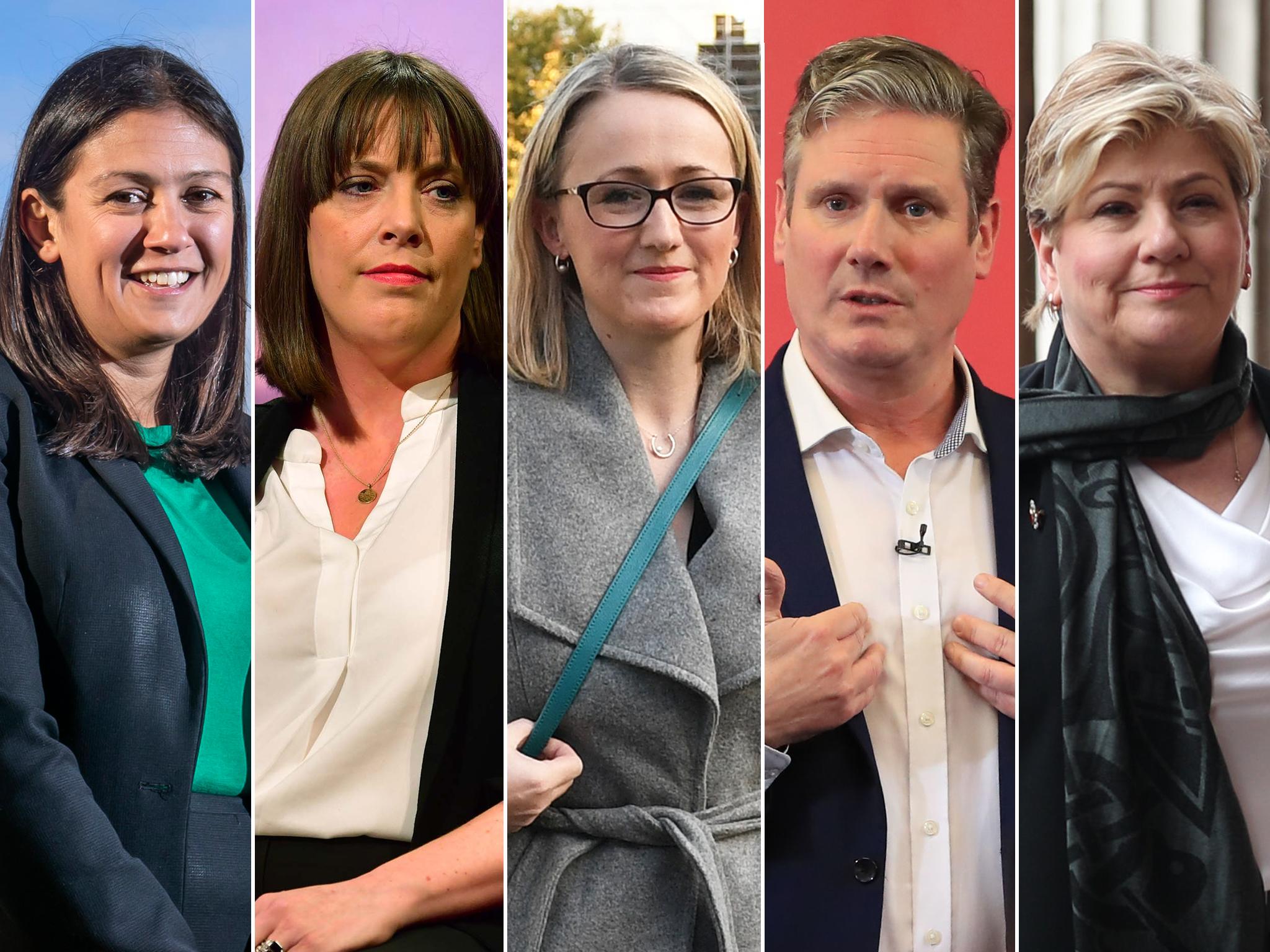How each contender can win the Labour leadership race
Some are more likely than others, but each of the final five has a possible route to victory, writes John Rentoul


Now there are five candidates, what chance does each of them have of winning the Labour leadership? Let us start with the odds given by the bookmakers. These are not reliable predictions, but they give an idea of how people who are prepared to put money on their predictions see the race.
Keir Starmer is the favourite, with a 73 per cent chance of winning. Rebecca Long-Bailey has a 17 per cent chance. Lisa Nandy is in third place on 9 per cent, with Jess Phillips and Emily Thornberry some way behind on 3 and 2 per cent.
Phillips and Thornberry obviously need a miracle, but remarkable things do happen in politics. After all, Jeremy Corbyn was a rank outsider at the start of the contest in 2015. But the rules have changed since then, and Phillips and Thornberry now need to get through the next stage of the election by winning nominations from trade unions or local Labour parties.
Thornberry, who only just got enough nominations from MPs and MEPs with 10 minutes to spare, I am told, is going to find this stage hard. As Luke Akehurst, an activist in Labour First, explained, she needs the support of at least one big union – Unite, Unison, GMB, Usdaw or CWU – or 33 local parties.
The first three big unions seem to be lining up behind Long-Bailey, Starmer and Nandy respectively, with Usdaw and the CWU more likely to back one of the frontrunners than to help put an outsider on the ballot.
Phillips could possibly organise 33 local parties (5 per cent of the 647 total) to back her, but most of them are dominated by Momentum, currently running a North Korean style consultation of its members to allow them to agree that Long-Bailey should be leader. Even in most non-Corbynite local parties, the best Phillips can expect is to come second in an all-members vote.
So, does that mean the contest will come down to a straight fight between Starmer and Long-Bailey? Not necessarily. As Paul Waugh of Huffington Post pointed out today, if Nandy secures the backing of the GMB and gets on the ballot paper, and if Long-Bailey’s campaign continues to falter, it is possible that Nandy could make it into second place when first-preference votes are counted on 4 April.
If that happens – and the same applies if Phillips makes it onto the ballot paper and then overtakes her rivals – then Labour’s preferential voting system comes into play.
Waugh’s theory is that Nandy would pick up the second-preference votes of Long-Bailey (and Phillips) supporters, especially if they really want a female leader. And then Starmer really could face a contest.
It could happen. It would, after all, be less of an upset than Corbyn winning in 2015.
Join our commenting forum
Join thought-provoking conversations, follow other Independent readers and see their replies
Comments